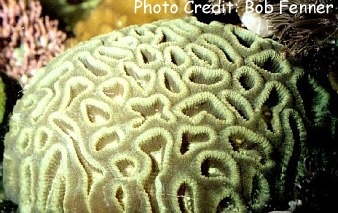
By Bob Goemans


Likely Reef Tank Suitable
Likely Fish-Only Tank Suitable
There are many of interest in this family! Two of the more recent genera experiencing growth in the trade are Acanthastrea and Micromussa. They are almost indistinguishable; with those in the Micromussa genus having smaller corallites (the skeletal area containing the polyp) than those in the Acanthastrea genus. Nevertheless, their colors are extraordinary, as are their prices, as I've seen small frags (fragments) a few inches (7.5 cm) in diameter costing almost 1000 dollars! In fact, one larger colony was 2000 dollars!
Micromussa specimens come from southern Japan, Hong Kong, and various other Indo-West Pacific regions, with most specimens in the trade now said to come from Australian waters. Technically speaking, they are a fairly new genus of coral, as their species were at one time in the genus Acanthastrea. But as its species numbers increased, those with smaller corallites (8mm or less) were reclassified and placed into a new genus - Micromussa. In the trade they are simply called 'Micros,' and those in the Acanthastrea genus, as 'Acans.' From there, the names of differently colored frags vary immensely, with their names only limited by one's imagination.
As for those in the genus Acanthastrea, they appear to be more widely distributed, with some also found along the East African coastline, Madagascar and the southern portion of the Arabian Peninsula. Presently, most mother colonies in either genus seem to come from Australian or Hong Kong waters. In the wild, these are fairly common corals and are found in shallow protected waters in their regions, with some attaining one or two meters in diameter. They are heavily tissued reef building corals with interconnected corallites of uneven heights having a thick fleshy mantle. Collectors have, in fact, for long in the past simply removed portions of large mother colonies in the wild for the trade so not to flood the market with too many specimens.
Colors vary with origin, yet reds, greens, and various shades of purple with contrasting colors attract hobbyists 'and' high prices. Their availability and wide range of colors has led to an amazing race in the aquaculture trade to produce even more highly attractive specimens. And it may have all started about a decade ago with one species in the Acanthastrea genus, A. lordhowensis, which is naturally found in an array of very pretty color combinations.
As for the species in the Genus Cynarina, they have common names like Open Meat Coral, Meat Coral, Sea Button Coral, Button Coral, Cat's Eye Coral, Doughnut Coral, and Tooth Coral. It is a popular photosynthetic stony coral imported from the Philippines and the Solomon Islands. It's a single polyp animal and can get to the size of a dinner plate. Water quality appears not too important as it comes from high nutrient areas. Julian Sprung suggests there are three species in this genus, i.e., C. lacrymalis, C. deshayesiana, and C. macassarensis. He also notes that a previous described species in this library, which was shown as Scolymia vitiensis, is actually C. deshayesiana. Since I'm a non-scientist and have the greatest respect for him, whom I've known for at least two decades, I've moved the noted misidentified specimen to this genus as C. deshayesiana. Input such as this welcome, and I thank Julian for bringing my attention to this matter.
Those in the genus Blastomussa have common names such as Pineapple Coral, Open Brain or Moon Coral. Their large polyps, sometimes on tubular corallites, form a mound-like growth. Often in various shades of brown, however, there are dark red with green centers available. Somewhat difficult to find these days.
Lobophyllia species have common names such as Flat Brain Coral and Lobed Brain Coral. They are more flat-like in body shape than most brain corals and have large meandering tissue ridges. These photosynthetic corals are very hardy and undemanding in closed systems. Colors vary, e.g., combinations of green, orange, red, brown, and gray.
The species in the Genus Symphyllia have common names such as Meat Coral, Wrinkle Coral, Lobed Brain Coral, Pacific Cactus Coral, Closed Brain, Dented Brain, and simply Brain Coral. That's because these photosynthetic corals are similar in shape to Lobophyllia, with large meandering tissue ridges. Very hardy and undemanding and colors vary, e.g., combinations of green, cream, brown, and gray.